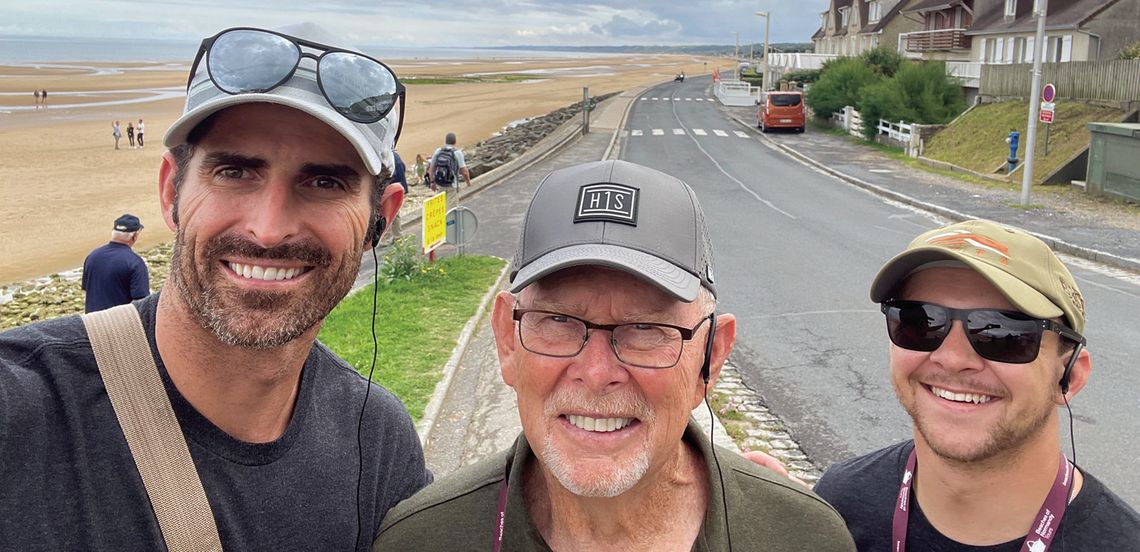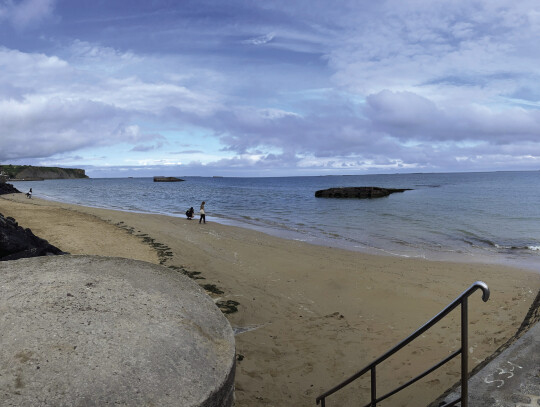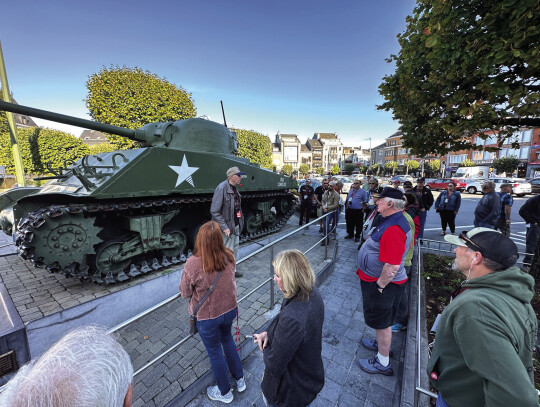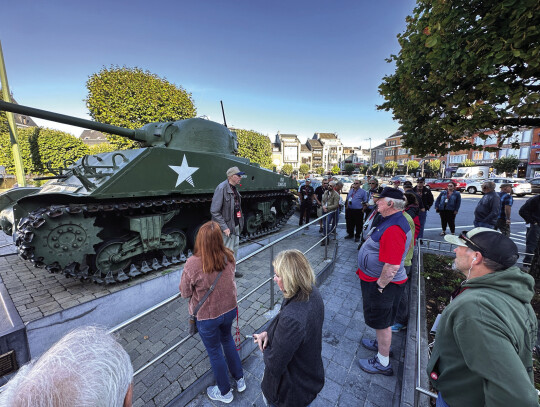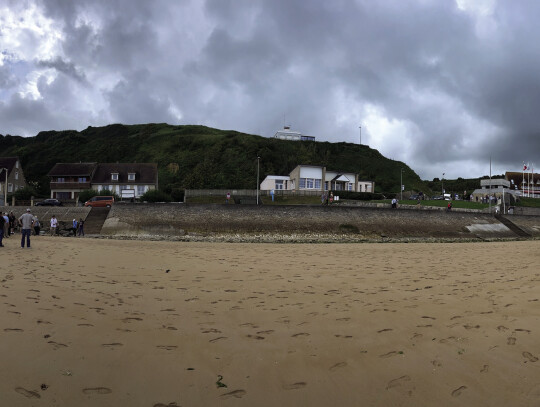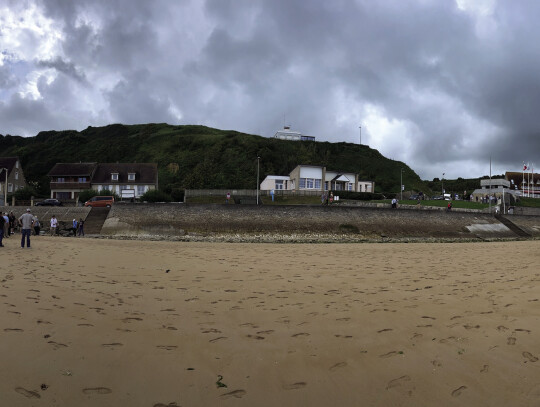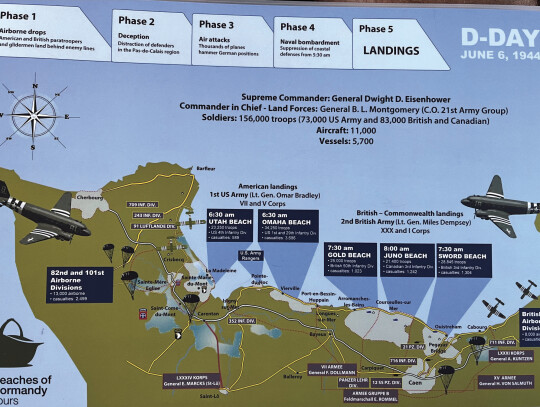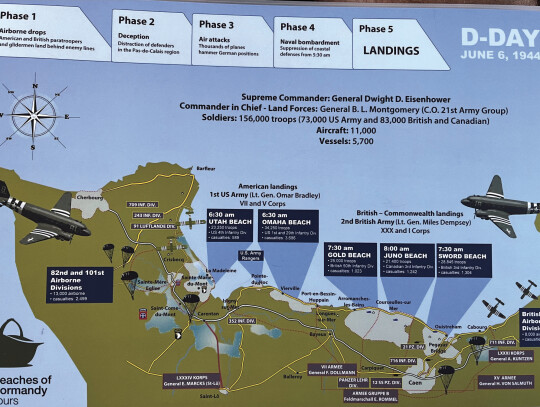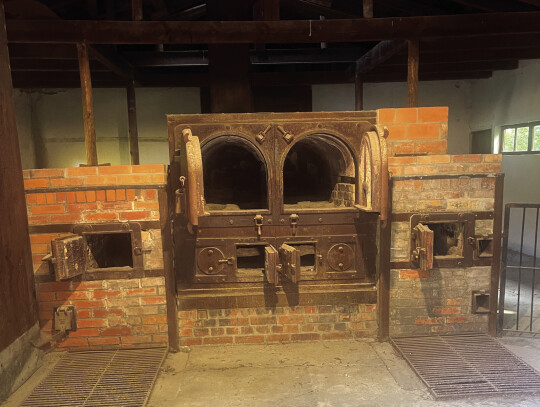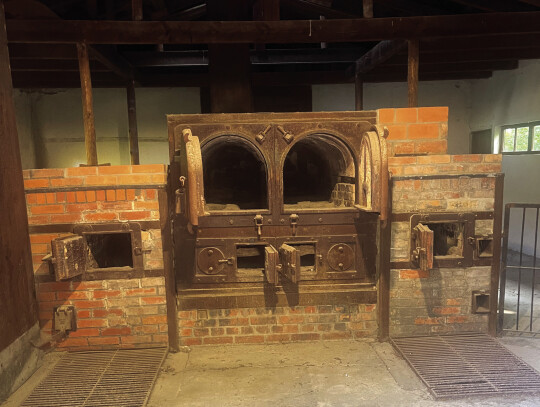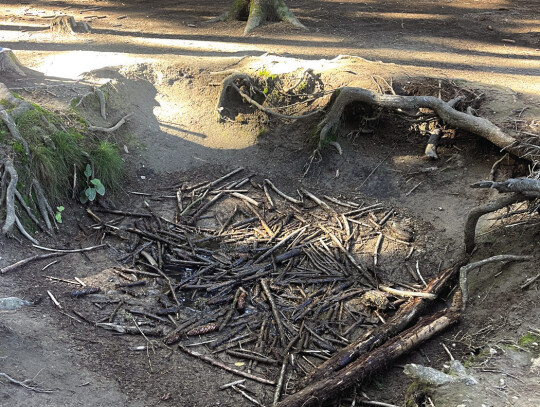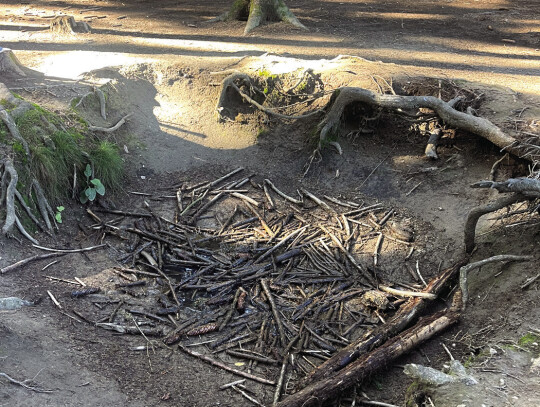Editor’s note: The following story was written by Rockbridge County resident Rusty Capps about his recent trip to Europe, where he and his sons visited sites associated with one of the most famous U.S. Army companies of World War II, Easy Company. The unit was featured in the 2001 HBO miniseries “Band of Brothers.”
Our trip to follow in the footsteps of Easy Company, 506th Parachute Infantry Regiment, began at Dulles Airport on Sept. 7. My two sons, Devon and Sean, and I had been planning it for more than two years. It was initially to be a celebration of my 80th birthday, but conflicting schedules caused us to postpone it by more than a year. My wife, Cindy, was our travel agent and set up the entire trip.
We flew into Charles de Gaulle airport, north of Paris, two days early and spent an interesting afternoon and the following full day walking the streets of Paris, along with more than a few hundred thousand international tourists in town for the Rugby World Cup Games. The weather was beautiful and so was Paris! It was hot, very hot, however, and the boys led me on a forced march of 14,000 steps through the Paris streets.
On Sunday we met the tour guide, Ben from Budapest, and bussed from Paris to Normandy, staying in a small hotel in Port-en-Bessin-Huppain, almost in the center of the Normandy invasion beaches.
I have several noteworthy impressions of our tour of the invasion beaches. First, the size of the D-Day invasion was far larger, and the beaches far wider than the books I’ve read and the movies I’ve seen led me to believe. From west to east, the five invasion beaches (Utah, Omaha, Gold, Juno and Sword) are 80 kilometers (about 50 miles) wide. At low tide, the beaches can be as much as 700 meters from the water’s edge to the sea wall, the dunes, or the cliffs.
Over and over again, as we walked those beaches, I was struck by how immense an undertaking the invasion was, how well the beaches were defended by the Germans, and how difficult and terrifying it must have been to the Allied infantrymen and their Navy coxswains to land and fight their way off these beaches. More than 133,000 Allied soldiers came ashore or landed by parachute on D-Day.
Our first stop of the day was Utah Beach. I was moved to tears as I walked through the ravine onto the sand of the beach by its immense size and saw the distances soldiers had to cross under enemy fire after leaving their landing craft. The distance to the dunes and the sea wall on both of the American beaches (Utah and Omaha) was nearly 700 yards.
At Utah Beach only 52 Americans were killed, the lowest number on any of the Allied Beaches. It was a very different story on Omaha Beach. Men in the first two waves of the 29th and 1st Infantry Divisions had to cross the 700 meters of withering fire just to make it to the sea wall where they would be pinned down for the next several hours. Casualties were far higher in Omaha (2,400 were killed, wounded, and missing by day’s end) than all the other landing beaches combined. The situation was so bad on Omaha that U.S. commanders offshore delayed the third wave of landing craft and considered moving the landings of subsequent waves to Utah Beach, where troops were moving inland.
It was at Omaha Beach that the 19 “Bedford Boys” (all in their 20s, from the small Virginia town of Bedford) of the 29th Infantry Division landed at 6:35 a.m. By 6:45, their company had ceased to exist and all 19 were dead. The people of Vierville-sur-Mer, which is in the middle of Omaha Beach, named a street in their small town Rue de Bedford, and are now sister cities with Bedford. It brings tears to my eyes to think of how difficult this loss must have been for so many families in Bedford.
As much as I’d like these pictures and my narrative to be able to convey to you the enormity of this invasion, they can’t! You’ll just RUSTY CAPPS (center in top photo) and his two sons, Devon and Sean, toured World War II sites in Normandy, France, and Belgium where the U.S. Army’s Easy Company fought. In the top photo, the three are shown with Omaha Beach in the background. The photo above is taken from a German position on Omaha Beach with Point du Hoc, which was stormed by Army Rangers, in the background to the far left. In the water are the remains of the Mulberry artificial harbors that were built after D-Day to allow the Allies to resupply the troops on shore. AT LEFT, 87-year-old Henri Mignon, who was 8 years old in 1944, gives a tour in the city center of Bastogne in front of an American Sherman tank that fought in the Battle of the Bulge at Bastogne. BELOW is the view the Americans would have had of the seawall and German fortifications as they landed on Omaha Beach on D-Day.
have to go there and see for yourselves, as we did, the immense size and challenges of this seaborne invasion.
We also spent a second morning at Pointe du Hoc, where three companies of the 2nd Ranger Battalion came ashore, and scaled the cliffs under heavy German fire to destroy six World War I French 155mm guns, sited in the massive bunkers overlooking the beach. If you saw the movie “Saving Private Ryan” you know the rest of this story. The guns had been moved and were in a ravine several hundred yards back from the Pointe. The Rangers fought off five German counterattacks on D-Day and eventually captured the guns, losing 135 killed in action in the battle for Pointe du Hoc.
After two full days touring the Normandy beaches, we bused to Bastogne (it took a full day to drive the 600 kilometers). We spent the next day in and around Bastogne walking the city, getting briefings on the battle, and visiting cemeteries, museums, and foxholes dug by the men of Easy Company. It was interesting, but not nearly as compelling as the invasion beaches of Normandy.
Our tour guide at Bastogne was 87-year-old Henri Mignon, who as an 8-year-old boy experienced firsthand the German occupation, their retreat eastward in September 1944, and their return in December to surround the town. His first-hand accounts of the death of his father, his family’s efforts to stay alive, and the conditions during that very cold winter were remarkable.
On Day 7 we bussed to the Dachau Concentration Camp, which provided horrifying illustrations of the extremes in immoral and criminal behavior that a totalitarian system can spawn.
I was struck here, as I had been in Normandy, with the immense size and scope of the facility and its many outlying satellite camps. As I stood on the parade ground, where the prisoners stood in formation several times a day, and looked at the one rebuilt barracks (there were 34 when the camp was operational) and then at the foundations where the other barracks stood, I was overwhelmed with the enormity of Nazi Germany’s ability to normalize the murder of millions.
Our guide explained that each barracks was built to house 200, but frequently housed over 2,000 prisoners. He told us that during its operation from 1933 (Dachau was the Nazi’s first concentration camp) to 1945 more than 20,000 prisoners died or were killed by their SS guards there.
As an absolute contrast to Dachau, in the afternoon of Day 7, they bussed us to the opening day of Oktoberfest. I was pretty sick at this point, having by mistake drunk water out of a machine at breakfast that morning. So, I wasn’t in much of a beerdrinking, schnitzel-eating, partying mood. But we went, and along with 150,000 beerdrinking, singing Germans, we partied only a very little. It was an event, to be sure, and if I’d felt better … well, you can fill in the rest. This twoweeklong event can gross as much as 4 billion Euros.
On the last day, we bussed to Ober-Salsburg and saw the Kehlsteinhaus, Hitler’s mountain retreat, the Eagle’s Nest. It was amazing! Not just the views, but also the German engineering that built the place, and the 6 kilometers of roads up to it, in only 11 months. Also, it was news to me and the boys that there are no bedrooms in the Eagle’s Nest, so Hitler never stayed there overnight; he had a home in Ober-Salsburg below and only visited it 12 times.
The views on all sides of the Eagle’s Nest were extraordinary! But as I enjoyed them I wasn’t sure how I felt about my boys and I sharing them with one of the world’s greatest villains, in a facility that was built to celebrate his birthday.
Well, the Eagle’s Nest was our last stop on this trip of a lifetime. We were all a bit sad. It was a wonderful experience for me, being with my boys for almost two weeks. It was so much fun! We had so many great conversations, shared so much, and laughed so hard that sometimes it hurt. I’ll never forget it and neither, I expect, will they. I’m very lucky to have been able to do it, lucky to have done it with them, and lucky to have a wife and two daughters-inlaw who supported our going.
.jpg)
